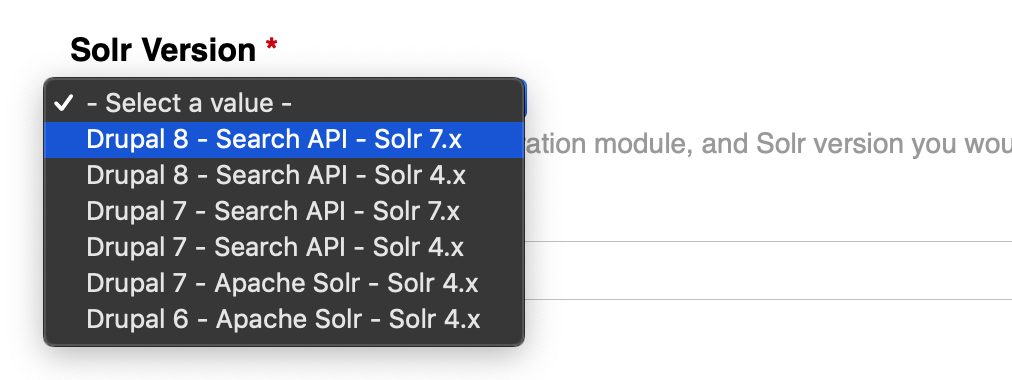

- APACHE LUCENE JAVADOC HOW TO
- APACHE LUCENE JAVADOC CODE
- APACHE LUCENE JAVADOC OFFLINE
- APACHE LUCENE JAVADOC DOWNLOAD
Filter definitions should follow a tokenizer or another filter definition because they take a TokenStream as input. You configure each filter with a element in schema.xml as a child of, following the element.
APACHE LUCENE JAVADOC HOW TO
How to Contribute to Solr Documentationįilters examine a stream of tokens and keep them, transform them or discard them, depending on the filter type being used.Authentication and Authorization Plugins.Monitoring Solr with Prometheus and Grafana.Adding Custom Plugins in SolrCloud Mode.RequestHandlers and SearchComponents in SolrConfig.Schema Factory Definition in SolrConfig.DataDir and DirectoryFactory in SolrConfig.Introduction to Scaling and Distribution.Migrating Rule-Based Replica Rules to Autoscaling Policies.SolrCloud Autoscaling Automatically Adding Replicas.Cross Data Center Replication Operations.SolrCloud with Legacy Configuration Files.Using ZooKeeper to Manage Configuration Files.Setting Up an External ZooKeeper Ensemble.SolrCloud Query Routing And Read Tolerance.SolrCloud Recoveries and Write Tolerance.Interpolation, Derivatives and Integrals.The Extended DisMax (eDismax) Query Parser.Uploading Structured Data Store Data with the Data Import Handler.Uploading Data with Solr Cell using Apache Tika.Understanding Analyzers, Tokenizers, and Filters.Working with External Files and Processes.Working with Currencies and Exchange Rates.Overview of Documents, Fields, and Schema Design.Using the Solr Administration User Interface.
APACHE LUCENE JAVADOC CODE
Here is the source code for this class: package This class is abstract and the concrete implementation that we will use is SimpleAnalyzer.Įnough talking already, let’s create a class named “SimpleFileIndexer” and make sure a main method is included. To create an IndexWriter, an Analyzer is required. Each Document is actually a set of Fields and each field has a name and a textual value. The IndexWriter receives Documents as input, where documents are the unit of indexing and search. This will be done with the help of a class named IndexWriter, which is the class that creates and maintains an index. Next, setup a new Eclipse project, let’s say under the name “LuceneIntroProject” and make sure the aforementioned JAR is included in the project’s classpath.īefore we begin running search queries, we need to build an index, against which the queries will be executed.
APACHE LUCENE JAVADOC OFFLINE
Also, make sure the Lucene API JavaDoc page is open at your browser (the docs are also included in the tarball for offline usage). Extract the tarball and locate the lucene-core-3.0.1.jar file which will be used later. tar.gz versions are significantly smaller than the corresponding. The version I will use is 3.0.1 so I downloaded the lucene-3.0.1.tar.gz bundle (note that the.
APACHE LUCENE JAVADOC DOWNLOAD
The application we will build will allow you to index your own source code files and search for specific keywords.įirst things first, let’s download the latest stable version from one of the Apache Download Mirrors. Thus, I decided to provide some sample code to help you getting started with Lucene. I recently read a great tutorial about this project, but there was no actual code presented. NET port available under the name Lucene.NET, as well as several helpful sub-projects. I will deal with the Lucene Java version, but bear in mind that there is also a. Using its API, it is easy to implement full-text search. Lucene is an open-source project that provides Java-based indexing and search technology. In this tutorial I would like to talk a bit about Apache Lucene.


 0 kommentar(er)
0 kommentar(er)
